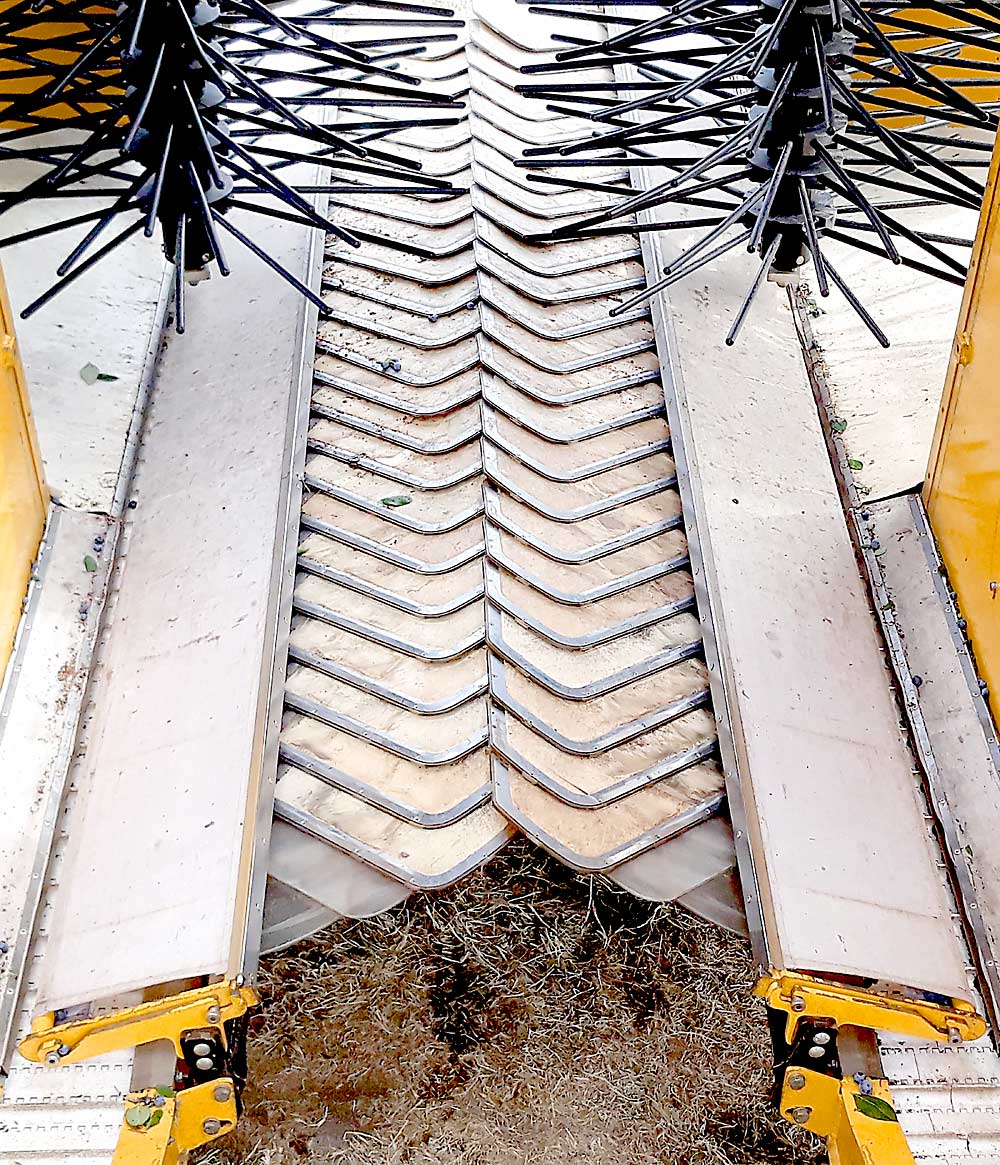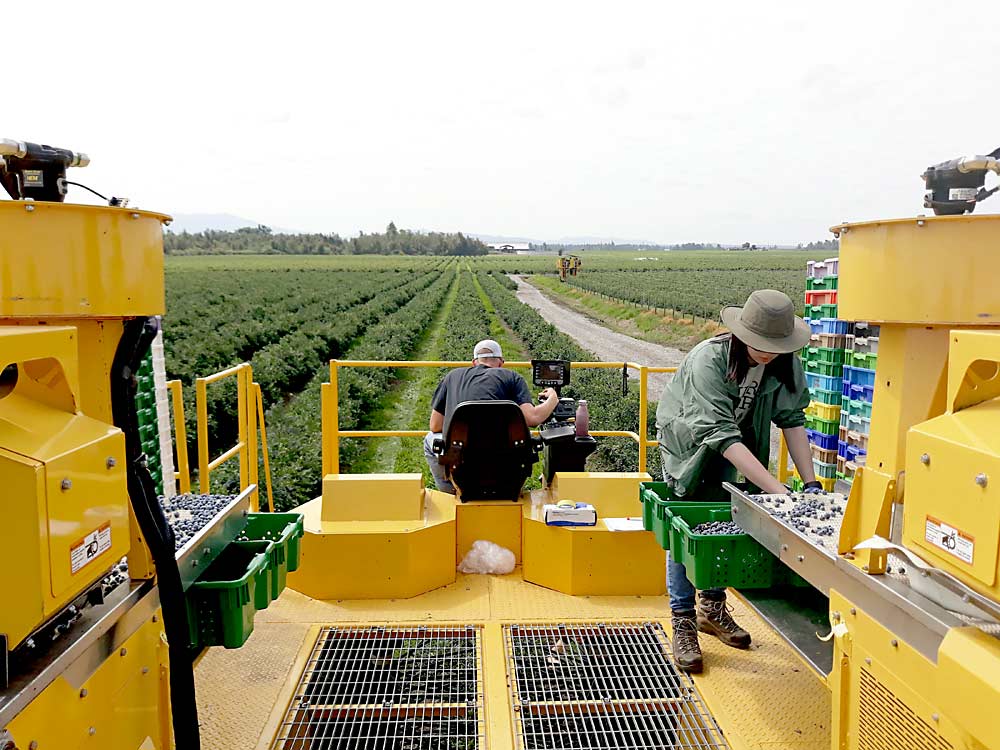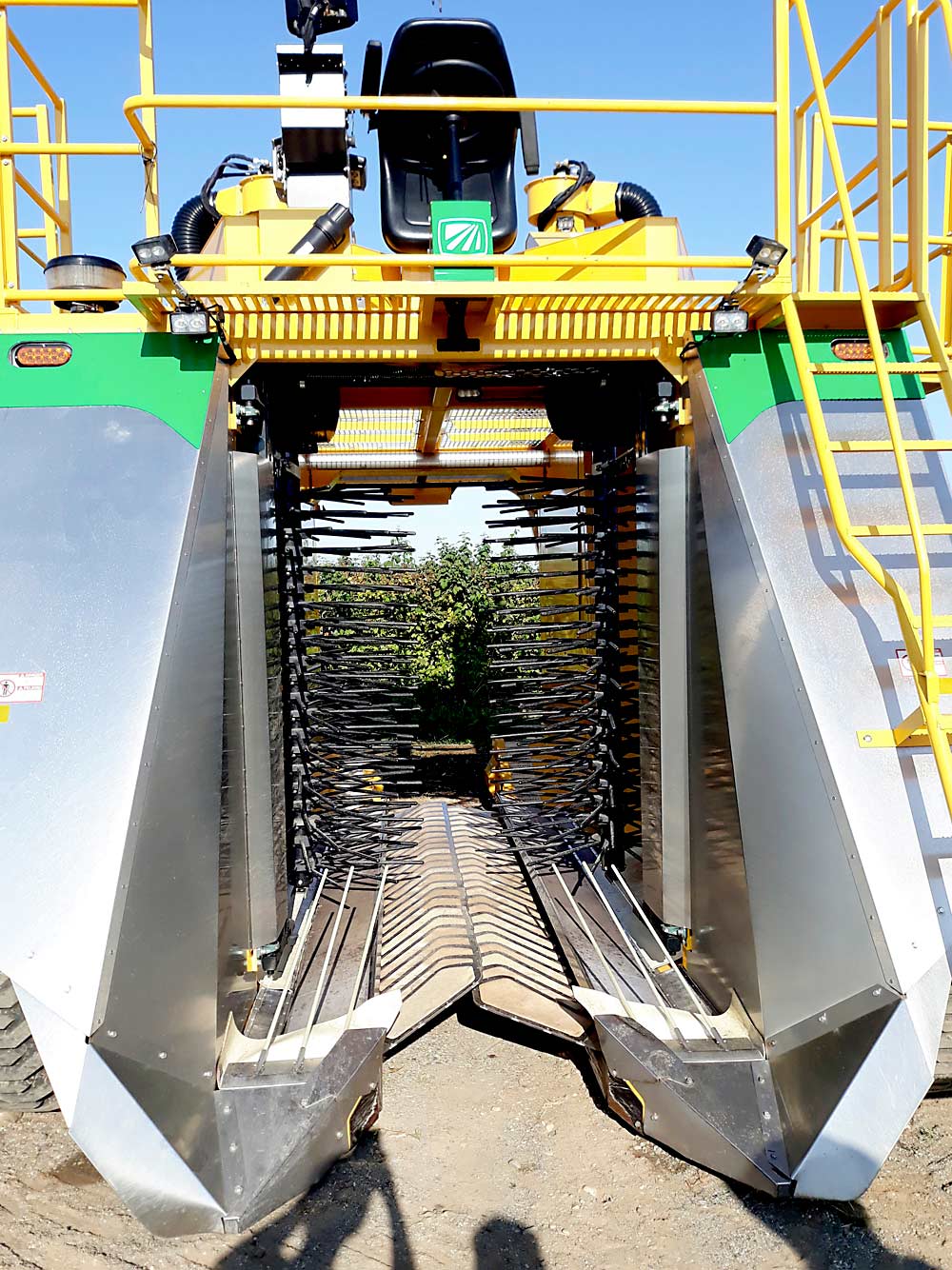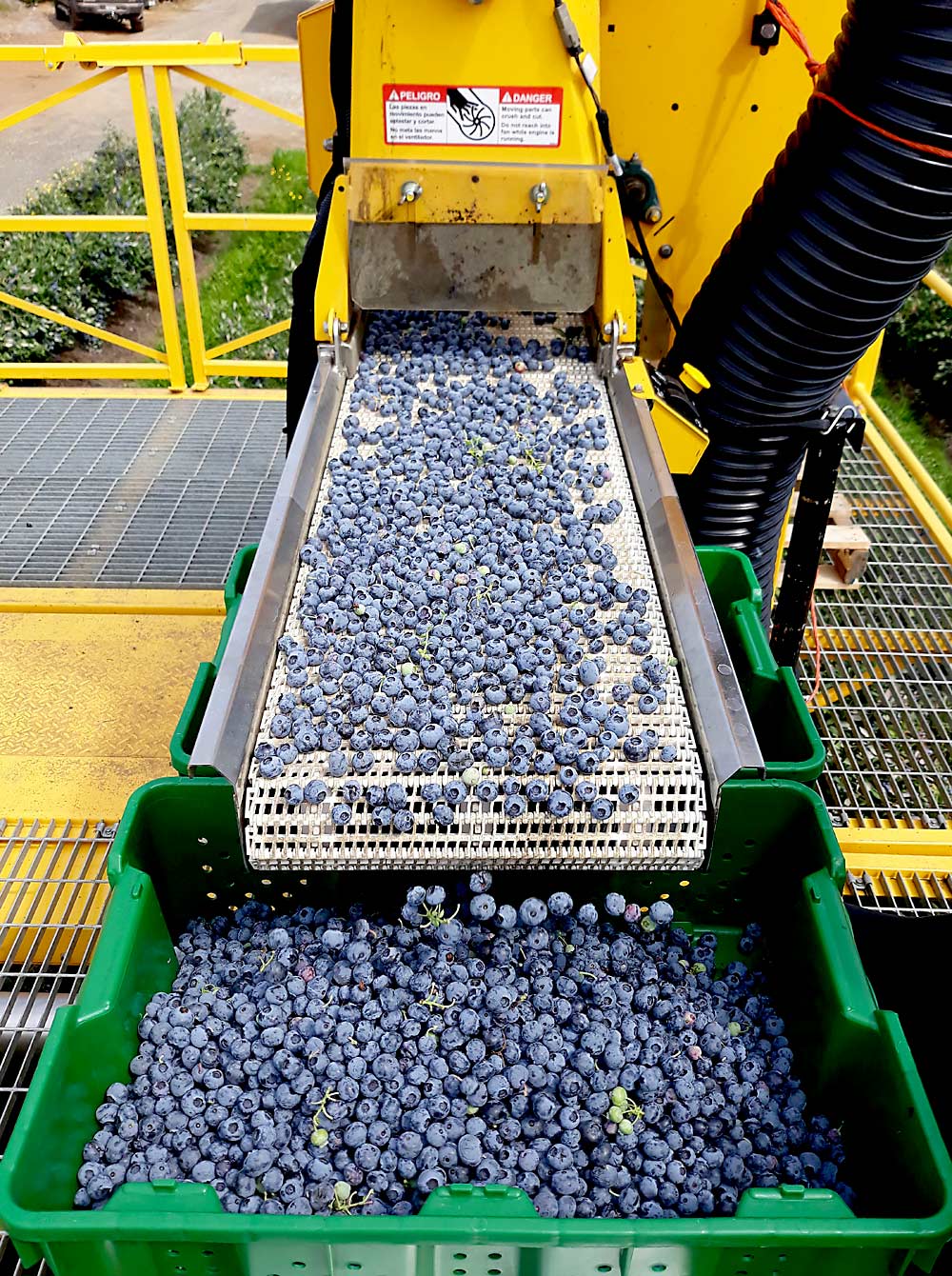
As the U.S. blueberry boom encounters an increasingly tight and expensive labor market, more growers see opportunity for cost savings in machine harvesting for fresh-market fruit — with machines traditionally used to harvest processing berries that can handle a little bruising.
But there’s one catch: Damage that occurs during harvest can cut into packouts and deteriorate fruit quality postharvest in shipping, which means global-market growers in the Northwest can’t use them, said Wei Qiang Yang, an associate professor and berry extension agent with Oregon State University.
“Right now, if we use the regular harvester, about 60 percent of the berries are damaged. If they can sell them in three or four days, a week, it’s OK,” he said. “But Oregon is an export-oriented industry. We need the quality; we need those fruits to be able to hold in storage for a longer period of time.”
Yang and a team of researchers across the U.S. began working on soft-catch technology for fresh-market blueberries in 2015, and, this season, several Northwest growers will be trialing over-the-row harvesters outfitted with impact-reducing materials that improve packouts. It’s the first of several necessary innovations — including better sorters and cultivar-by-cultivar prescriptions for best-harvest practices — to automate high-quality fresh-market blueberry production.

“It’s an important way to help with profitability, to be able to machine pick fresh-market blueberries,” said Lisa DeVetter, small fruit horticulturist for Washington State University and Yang’s collaborator on the project. “When we look at the economics, it’s pretty compelling: Even these expensive harvesters pay off.”
Lynden, Washington-based equipment manufacturer Oxbo International partnered with the researchers after a federal grant-funded effort showed the promise of soft-catch materials in a harvest-aid design using handheld shakers, Yang said. For the past few seasons, Yang and DeVetter have tested ever-improving prototypes, in partnership with Fumiomi Takeda, a U.S. Department of Agriculture research scientist based at the Appalachian Fruit Research Station in West Virginia. His work with a blueberry-sized sensor that records impact forces helped guide harvester modifications.
Funding for the current research comes from Specialty Crop Block Grants in Oregon and Washington, as well as funding from the Oregon Blueberry Commission and the Washington Blueberry Commission.
Oxbo modified its over-the-row harvester by replacing hard polycarbonate catch plates, the most important impact site, with softer materials that cushion the berries’ fall. These soft materials are also added at other impact sites inside the harvester. The exact composition of the materials is proprietary and still under some development, in terms of food safety and durability. The system can be deployed in either the top-load-style or rear-load-style harvesters, said Kathryn Van Weerdhuizen, market manager for Oxbo’s berry and grape business. She cautioned that the company, and its customers, still have a lot to learn about the new technology.
“I think we’ve got something we’re really proud of, but it’s not the easy button,” she said. Blueberry harvest is complicated — different cultivars have different timing and different firmness — and there’s no single road map for how to optimize results mechanically. “Our idea is to work with the grower partners this year to see how they are willing to modify their businesses to (increase the amount of fruit) we can mechanically harvest for fresh,” she said.
The harvesters comprise just one piece of a complicated chain of blueberry production tasks, from planting and pruning to sorting and shipping, that all have a role in making mechanization successful, Van Weerdhuizen said.

System change
In a 2016 survey of blueberry growers across the U.S., a third reported trying machine harvesting fruit for fresh markets, and 80 percent said they had quality concerns about harvesters. But rising labor costs leave growers little choice. In 2019, the U.S. Department of Labor issued a 50 percent wage hike midseason for H-2A contracted blueberry pickers.
“It’s one of those tipping points where the labor concern we’ve had for a long time is finally here,” Van Weerdhuizen said.
For some firmer cultivars, existing technology works fairly well, DeVetter said. For others, growers might machine harvest a cleanup pick for processing after hand-harvesting the first pick for the fresh market. Successful incorporation of new soft-catch harvester technology will have to be coupled with researchers’ and growers’ better understanding of how best to use it, she said.
“Definitely we see the quality increase, we see better packout just by changing the ground speed and shaking speed,” she said. But it is cultivar driven: the firmness, the pace of ripening, the optimum maturity, how many passes are needed, all differ. “I think we can get to a point where we have variety-specific recommendations,” she said.
That’s one of the research goals for this season, now that several commercial growers will be using the harvesters all season.

Yang and DeVetter also have ongoing research projects on the packing side, looking at new tools to assess fruit quality beyond firmness. Bruised tissue damage spreads rapidly in some cultivars, less so in others, which can result in big quality differences in exported fruit, Yang said.
“The message is that machine harvesting for fresh cannot be accomplished with just a good machine,” Yang said. “We know the new machine will reduce fruit damage with the soft-catch surface, but the goal is to reduce the internal damage first and then work with the packing line to improve the sorting process.”
New harvest and packing technologies will likely lead the industry to shift toward cultivars best suited for mechanized production systems. Breeders have these attributes in mind now, along with flavor and firmness, DeVetter said. She’s part of a new national research team developing DNA tools to accelerate breeding for blueberries and cranberries.
New cultivars that bruise less easily or can be picked in fewer passes would be ideal, Yang said.
“Each time you run the machine through, you lose about 25 percent of the berries on the ground, just because of how the machine runs around the bushes,” he said. “I think in the future, there will be demand for those types of cultivars.”
—by Kate Prengaman






[…] da: Softer landing for fresh blueberries (Good Fruit […]